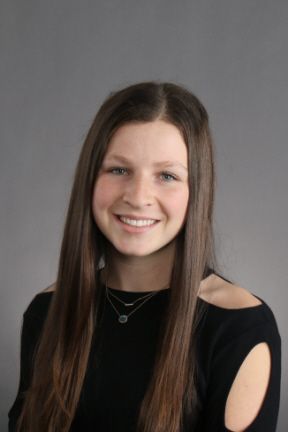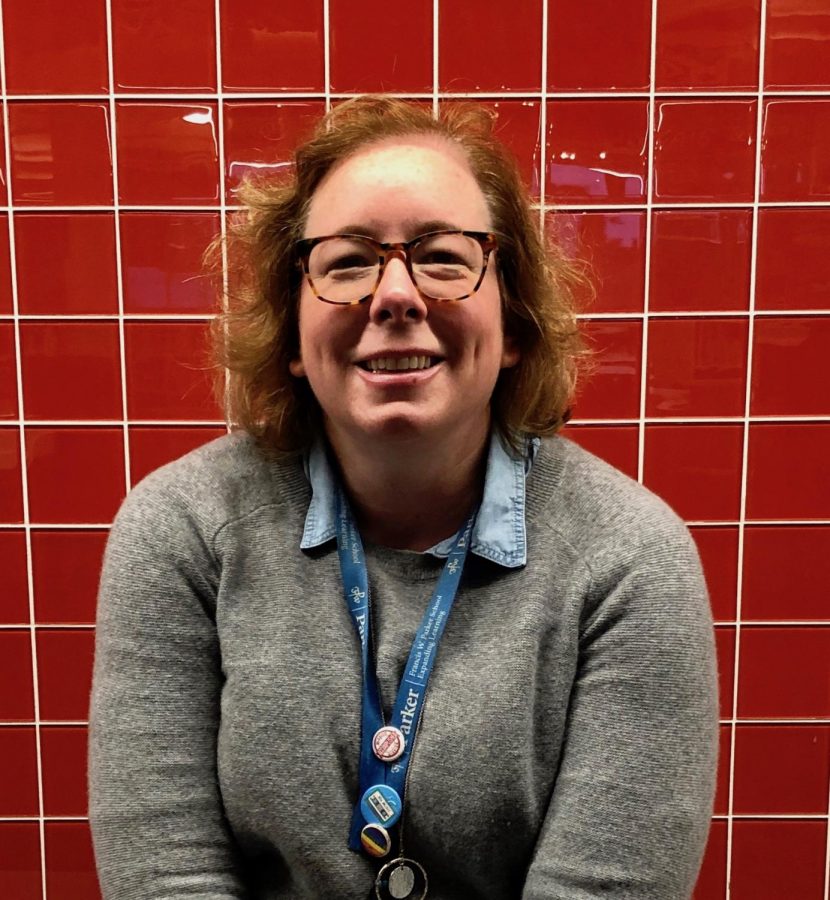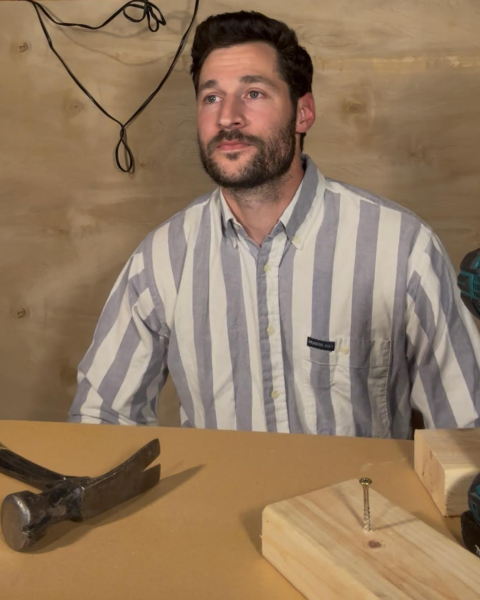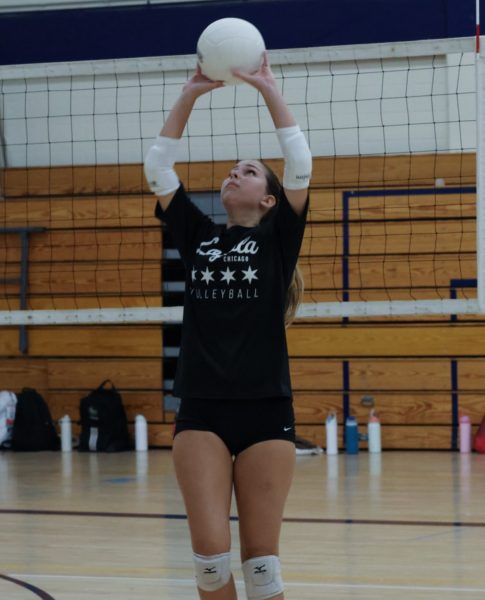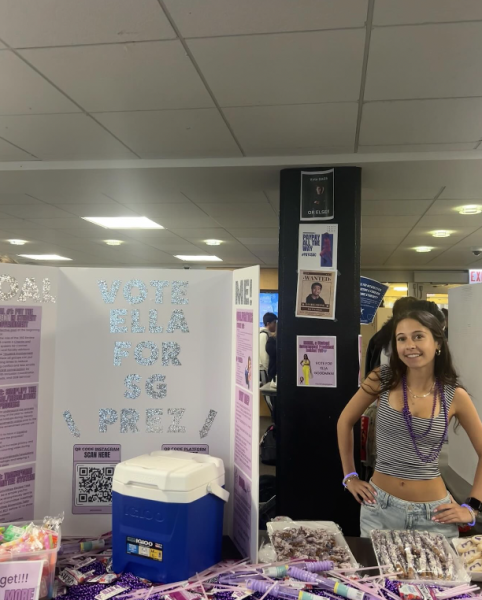Collaborate
Parker Librarian Mary Catherine Coleman Publishes New Book
Photo credit: Jared Saef
Librarian Mary Coleman poses for a photo in the library.
Collaboration is common at Parker. From faculty members collaborating with students to teachers collaborating with one another, especially in the library, collaboration can be seen everywhere. At the end of September, Lower and Intermediate School Librarian Mary Catherine Coleman published a book titled “Collaborate,” which was inspired and affected by her experiences at Parker.
Last year, Coleman was approached by the American Association of School Librarians (AASL). She said, “AASL oversees school libraries and puts out national standards for school librarians around the country to follow.”
The AASL had an idea for “Shared Foundations”––six basic concepts that they wanted school librarians to focus on. Coleman had previously been in contact with the ASSL when she, along with a few other Parker faculty members, won the “Collaborative School Library Award” from the AASL in 2017.
The AASL approached Coleman about a book regarding one of these Shared Foundations: “Collaborate.” Coleman’s book will be accompanied by the other five books in the series: “Inquire,” “Include,” “Explore,” “Curate,” and “Engage.”
“The whole premise of the book follows the theme of collaboration, covering how school librarians collaborate with fellow educators, how to develop the mindset of collaboration in students, and how it can be present in a physical space of a school library,” Coleman said.
“Most of the book was a lot of examples of projects I’ve done here, work I’ve done with different teachers here, and the whole concept and what we went through with the renovation of the library space.”
Middle and Upper School Librarian Annette Lesak began working at Parker at the same time as Coleman, and refers to Coleman as a “close colleague.” “I am definitely inspired by the projects Ms. Coleman does,” Lesak said. “She is so visionary and creative, and I’ve learned a lot by working with her.”
Coleman, who is in her sixth year at Parker, says that “Collaborate” is heavily influenced by her time at Parker through her work with different grades, students, and teachers. “One of the opportunities here that was different than the other libraries I’ve worked at was that the teachers were expected to collaborate together. We were expected to work together,” Coleman said.
In “Collaborate,” Coleman interviewed Parker teachers and shared ideas, which she attributes to helping her in the writing process. “Being a part of a community that was open to that definitely helped in the process,” she said. “Just the fact that JK through 12 were one shared space and sort of the way the department has developed at Parker was absolutely a huge influence on what I’ve been able to do and what I included in the book.”
One of the teachers Coleman interviewed was Lesak. “We collaborate a lot, that’s sort of just the nature of our team,” Lesak said. According to Lesak, Coleman was interested in some of the projects Lesak did with Middle School and Upper School students. She wanted to ensure that the book did not only apply to librarians for kindergarten through fifth grade, but she wanted it to be applicable to teachers and librarians in sixth through twelfth.
Technology Integration Specialist for Grades JK-5 Sarah Beebe was another faculty member who was interviewed by Coleman for “Collaborate.” Beebe and Coleman worked closely in developing the Integrated Learning and Information Science Department at Parker. The project mentioned in “Collaborate,” and what Beebe was interviewed for, was an art and coding project for the first graders during which they created robots that would create a piece of artwork.
“The main goal of that project is to get kids working together and working collaboratively,” Beebe said. According to Beebe, this project emphasized collaboration, as the students were only able to create one robot, requiring them to compromise.
“Having skill sets to be a collaborator is really important for people,” Beebe said.
Following the AASL’s initial request, Coleman spoke with them about what they were looking for in the book, and what Coleman thought she could provide. Then, Coleman completed a book outline discussing chapter and theme ideas which, once approved, lead to the actual writing process.
According to Coleman, she spent around eight months writing and five months editing. “It was a lot of writing and a lot of deleting,” Coleman said. “It was a little humbling at times, it was an interesting process, and I really enjoyed it.”
According to Lesak, a copy of “Collaborate” will likely be placed in the parent/teacher book collection in the library. “Hopefully other teachers at Parker will read it and maybe get inspiration from it, or its ideas, or see opportunities from it to kind of continue to grow the collaboration,” Coleman said.
